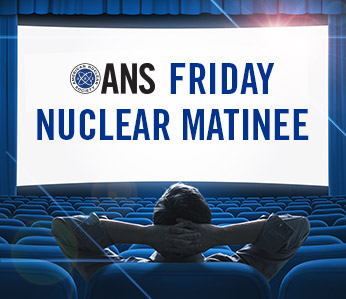Friday Matinee Special: Innovations in Global Licensing
(Part of a special series of videos filmed at the 2017 ANS Annual Meeting. By Will Davis.)

At the 2017 ANS Annual Meeting, Kristiina Soderholm (Head of Nuclear Technology and Innovation for Finnish nuclear operator Fortum) delivered an interesting and insightful short presentation on the potential future paths for nuclear plant licensing, in which she detailed an innovative proposal for an international approach.
Presently, any nuclear plant design that is developed is likely developed first with the regulatory scheme in its nation of origin as the primary consideration; this does not necessarily meet requirements elsewhere. This is the reason that, as one example, while Mitsubishi developed its Advanced Pressurized Water Reactor or APWR design for construction in Japan, it was also forced to develop and prepare for licensing a US-APWR and even an EU-APWR plant design for licensing in the United States and European Union, respectively. It's difficult, as Soderholm pointed out in her presentation, to design one plant to totally meet the requirements of multiple regulatory regimes - one example being the EPR, whose origin lies in work done by Framatome and Siemens to develop a nuclear power plant that could be licensed in both France and Germany. Her proposal to rectify this situation is somewhat of a step backward; Soderholm proposes an initial effort to internationally certify just the power module of an SMR type nuclear power plant. This would provide a fixed reference for the design of an accompanying power plant to incorporate the module in that engineers and constructors in any given nation could take the specifications of the module and its safety systems (or, NSSS if done in a larger GW scale conventional plant) and design the plant around it.
This proposal harks back to the early 1970's in the US. At that time, the AEC (later, NRC) was pushing the established reactor vendors (primarily Westinghouse, General Electric, Combustion Engineering and Babcock & Wilcox) to halt upward growth of their NSSS designs and then standardize each NSSS design so that every project didn't start from a blank sheet of paper. This was what happened, with each NSSS constructor developing Standard Safety Analysis Reports for their designs. It was thought that this would both ease and speed the process from time of announcement of a project to having the project on the grid, and seemed even more important after the Calvert Cliffs decision upheld the assertion that the AEC / NRC had to abide by the National Environmental Policy Act (NEPA) and perform full EIS or Environmental Impact Statements on each plant project -- a move that the AEC figured as adding two full years to any nuclear plant project.
When these were issued (Westinghouse's was the WESSAR, GE's the GESSAR and so on) there was no attempt being made yet to pre-certify any entire power plant design in a broad way. While some projects did get underway featuring either duplicate or replicate whole power plants, the further move to full overall design certification for the whole plant (at least in specification) was years in the future.
With these standardized but surely not duplicate NSSS's, as with Soderholm's proposal, any prospective owner of a nuclear plant could hire an architect-engineer and select through a bidding process a fixed-design NSSS to be installed in a plant otherwise designed to the specifications and needs of the owner and site.
What's most interesting about Soderholm's proposal is the fact, as she clearly points out, that today's SMR's are intended from the start to be international, which makes some sort of international approval seem not just desirable but likely at some future date.
You can watch the whole presentation (about 12 minutes) below.
 Will Davis is a member of the Board of Directors for the N/S Savannah Association, Inc. He is a consultant to the Global America Business Institute, a contributing author for Fuel Cycle Week, and he writes his own popular blog Atomic Power Review. Davis is also a consultant and writer for the American Nuclear Society, and serves on the ANS Communications Committee and the Book Publishing Committee. He is a former U.S. Navy reactor operator and served on SSBN-641, USS Simon Bolivar. His popular Twitter account is @atomicnews.
Will Davis is a member of the Board of Directors for the N/S Savannah Association, Inc. He is a consultant to the Global America Business Institute, a contributing author for Fuel Cycle Week, and he writes his own popular blog Atomic Power Review. Davis is also a consultant and writer for the American Nuclear Society, and serves on the ANS Communications Committee and the Book Publishing Committee. He is a former U.S. Navy reactor operator and served on SSBN-641, USS Simon Bolivar. His popular Twitter account is @atomicnews.

